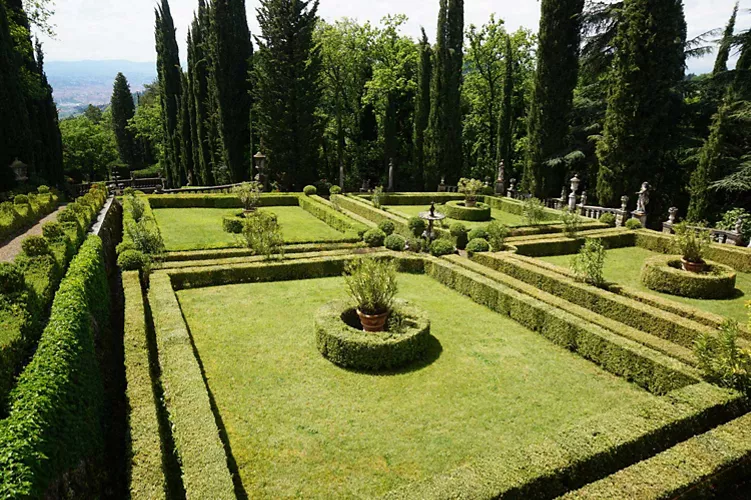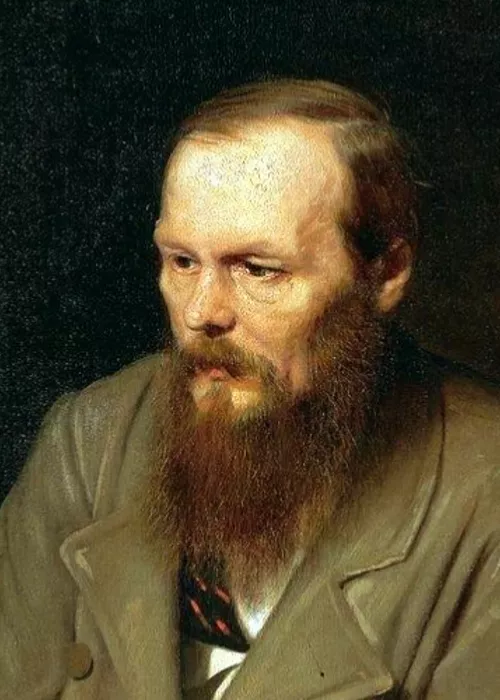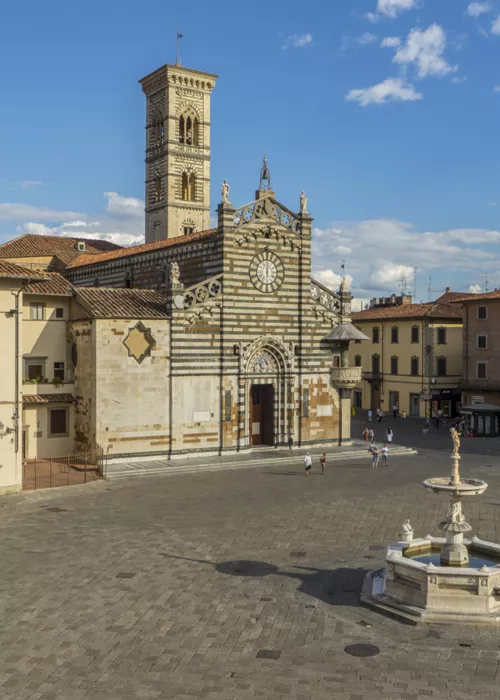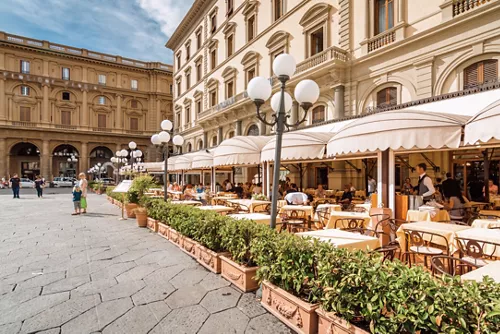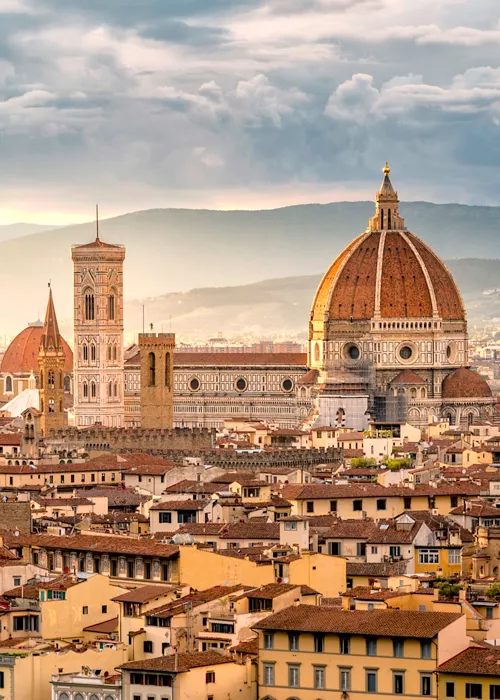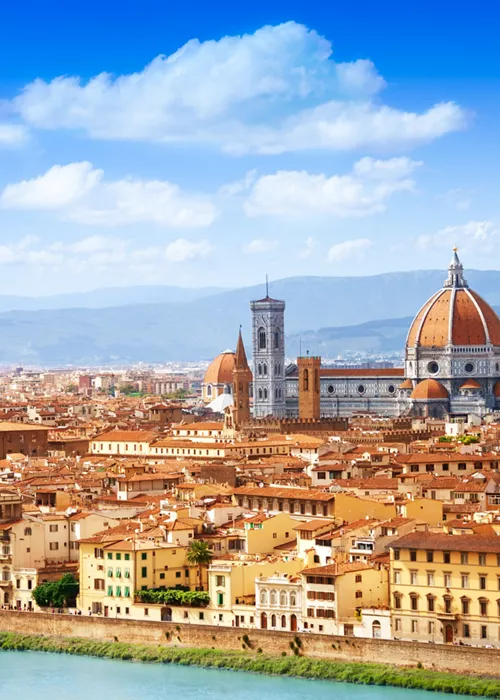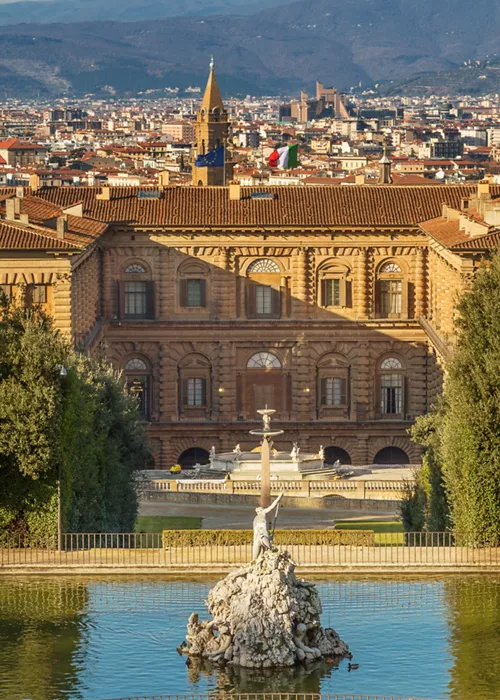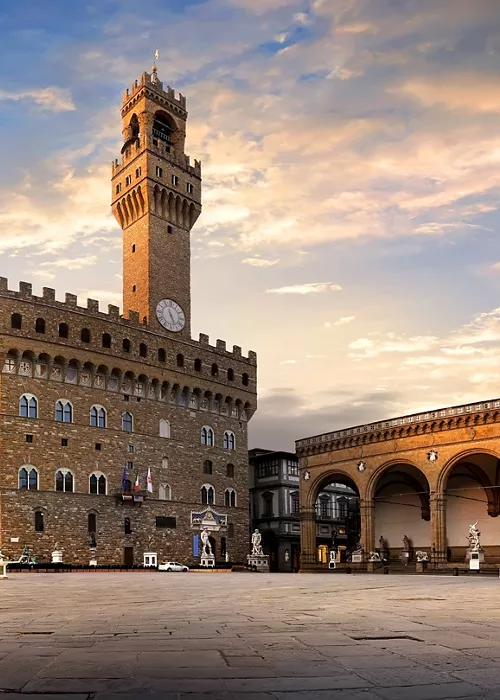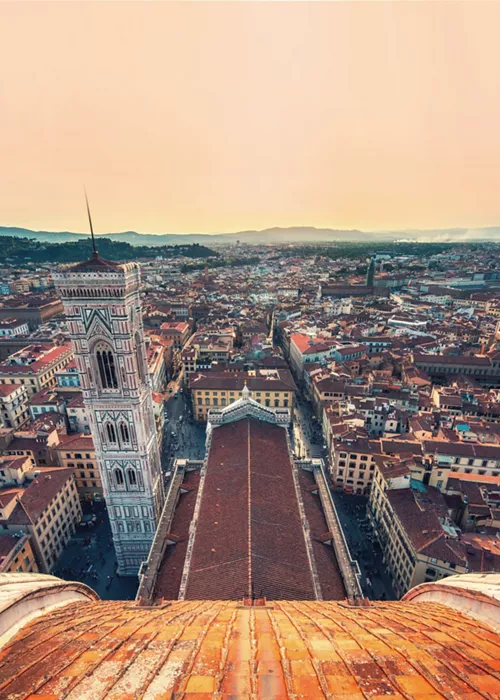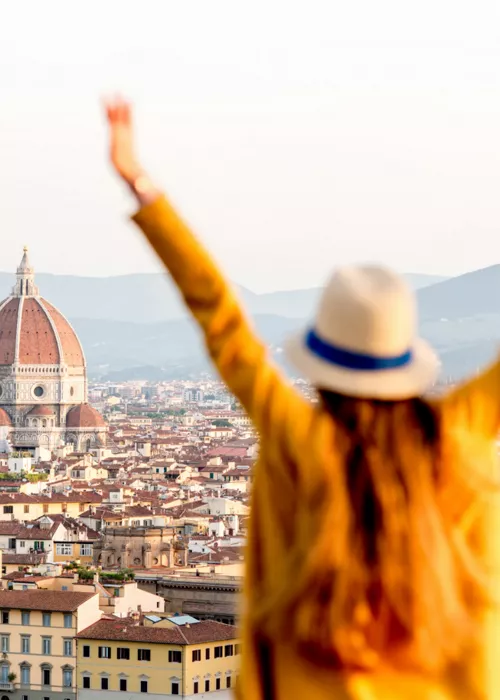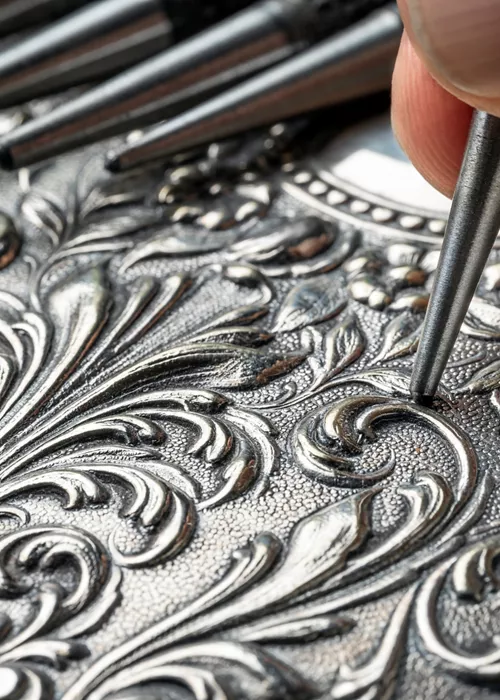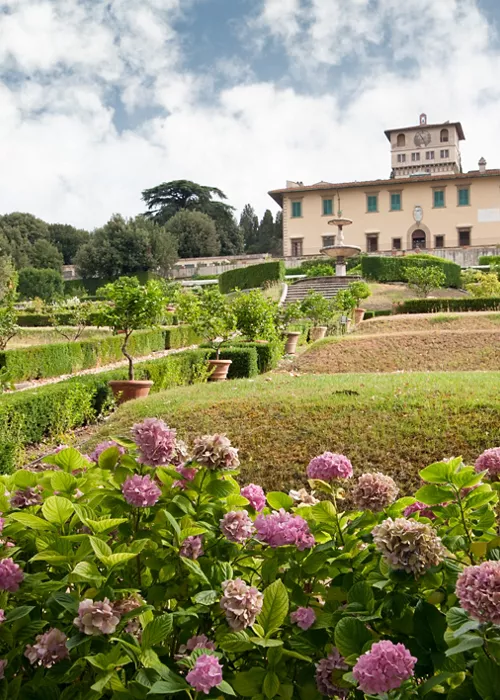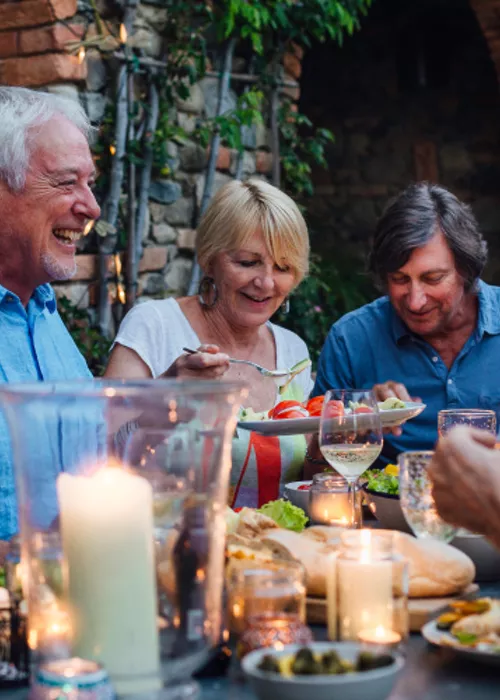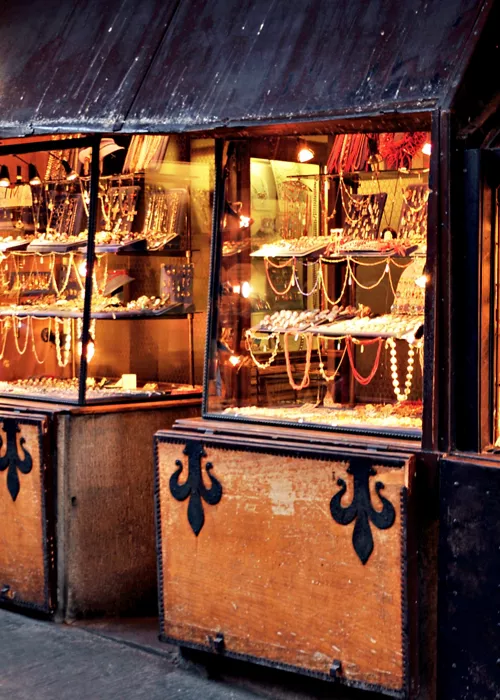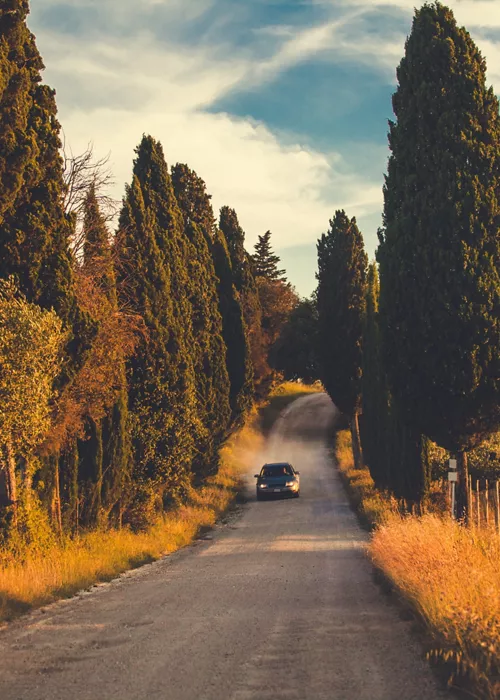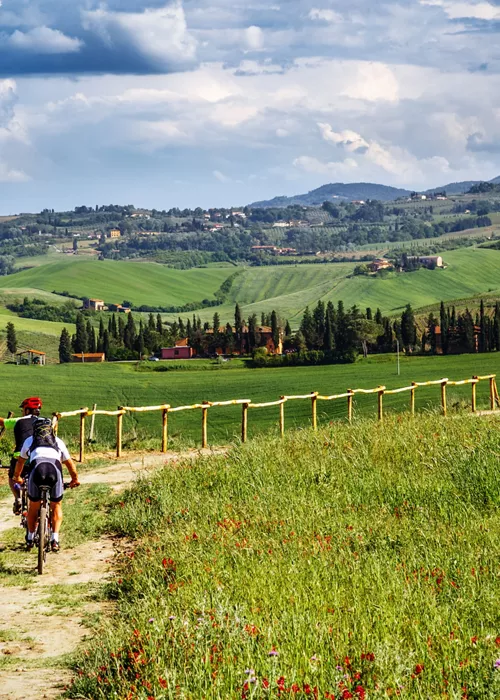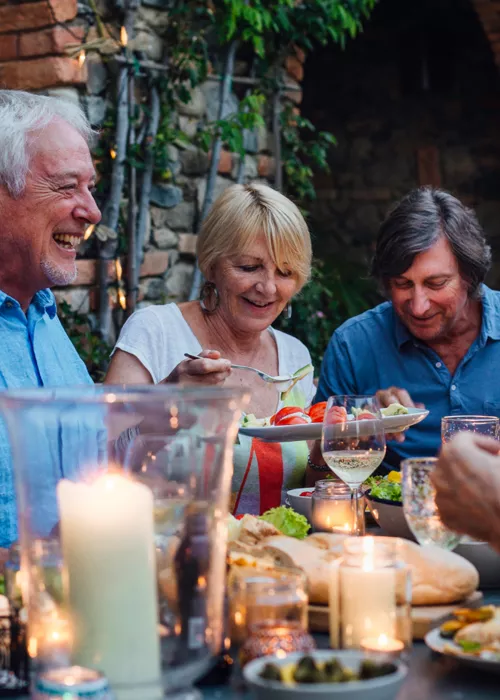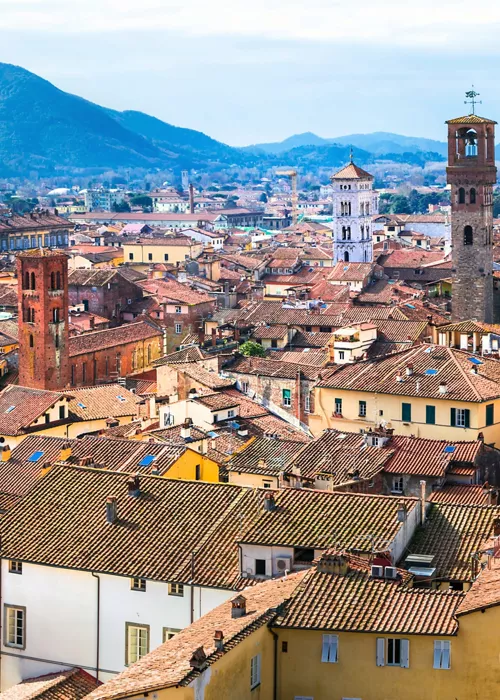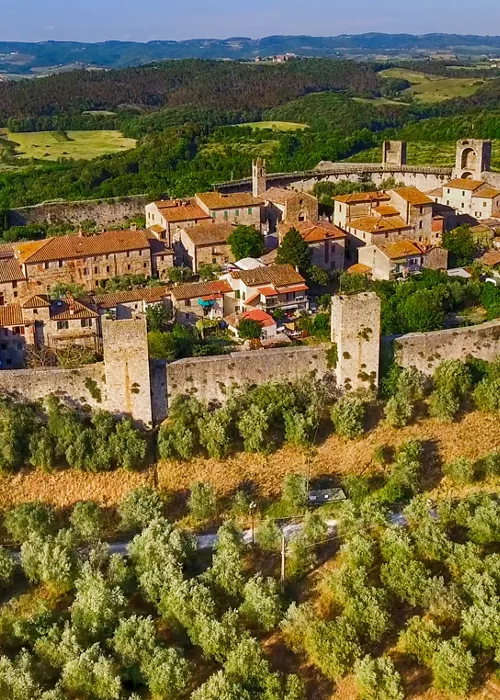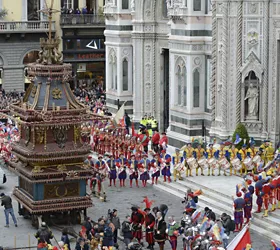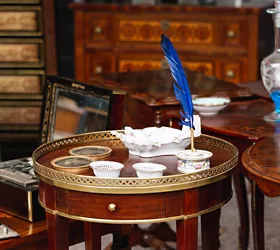Villa Peyron, the most beautiful view of Florence
Villa Peyron al Bosco di Fonte Lucente sits on the hill of Fiesole with its magnificent Italian gardens, park, woods and olive groves, forming a complex of rare beauty and perfect harmony.
The villa’s garden offers a spectacular view of Florence, and is therefore one of the most enchanting places to start immersing yourself in the wonders of the cradle of the Renaissance.
The passion of a lifetime
The villa was purchased in the early 20th century by a Piedmontese entrepreneur, Angelo Peyron, together with the 16th-century natural spring Fonte Lucente, which was needed to ensure the irrigation of the garden and surrounding cultivated fields.
However, the current architecture of the spectacular gardens that descend in tiers towards Florence were created by his son Paolo Peyron, who inherited the property at a very young age in 1932 due to the untimely death of his father. He dedicated his entire life to the villa, modifying and enriching it year after year with great sensitivity.
It was devastated during World War II when the villa was requisitioned by the German command and later by the Allies, who also set up a military hospital here; the garden was patiently rebuilt over the following decades with great care.
Florence through a clearing in the wood
Paolo Peyron followed his instincts in renovating the gardens originally surrounding the villa, as well as the woods that blocked the view of the city, without referring to landscapers or experts. It was therefore natural for him to consider making a clearing in the wood to open up the view of Florence.
A 20th-century garden
The villa and garden have been recognised by the Superintendency of Architectural and Monumental Heritage of Florence as an example of a 20th-century garden that successfully reinterprets the Italian garden traditions with contemporary taste.
It embraces the classic essences: from boxwood to the cypresses forming the backdrops of the terraces, from large, monumental cedars to oaks, while the wooded areas mostly consist of downy oaks.
The blooms that follow month after month include wisteria, azaleas, hydrangeas and potted citrus plants: in all, no less than 300 different essences have been catalogued, including wild orchids, the rare aristolochia and Webb's hyacinth.
The fountains with water from Fonte Lucente
There are an impressive 29 fountains in the garden whose water comes from the Fonte Lucente thanks to an impressive canalisation project implemented by Peyron's father. The spring is located upstream of the villa and the water is transferred through a large tunnel that was built into the hill. Interestingly, it was used by local farmers as a shelter from air raids during World War II.
The most unusual fountain is the one in the Chapel parterre, where water spouts from a lion sitting atop a column.
Below there’s the Music Square, so called because of the statues depicting Music and Dance, with an artificial pond that serves as a water reservoir for the more agricultural area.
A passion for collections
Paolo Peyron devoted as much care for his garden as he did the villa, which was the beloved home for his collections of antiques and art.
After the looting suffered during the war, Peyron worked hard to recover the lost furniture and objects. Today the villa is managed by the Bardini and Peyron Monumental Park Foundation, and is a small museum of 20th-century lifestyle. Some rooms under the large terrace are used as spaces for artistic events and conferences.
Find out more
The villa and its gardens can only be visited by booking in advance and for groups of at least 15 people.



